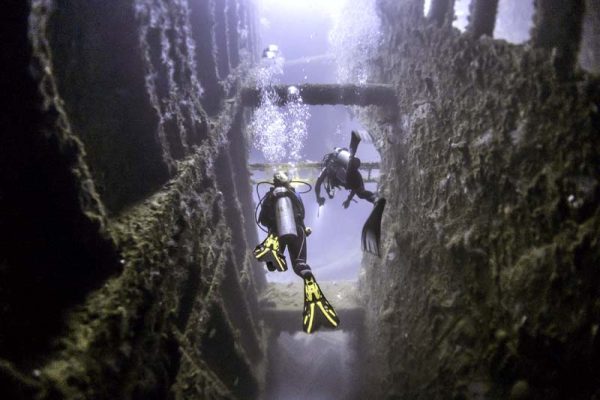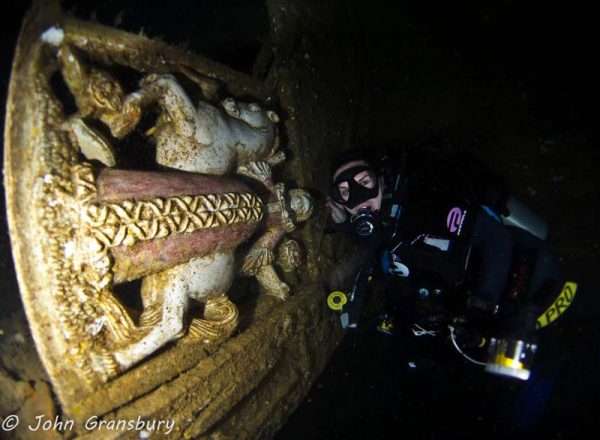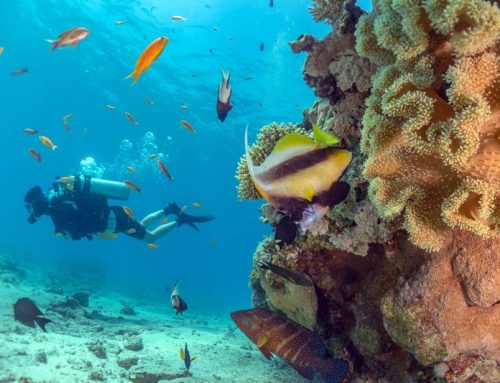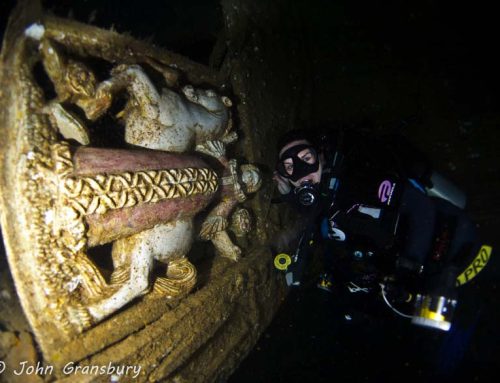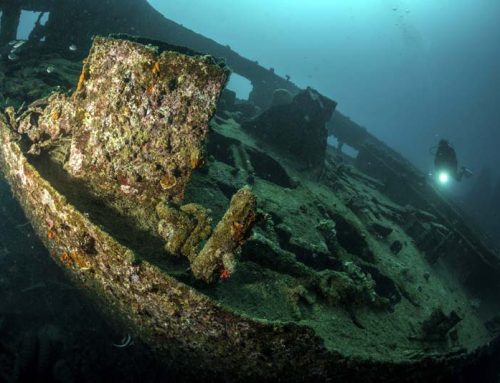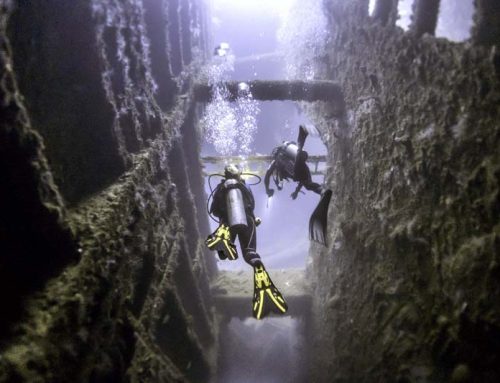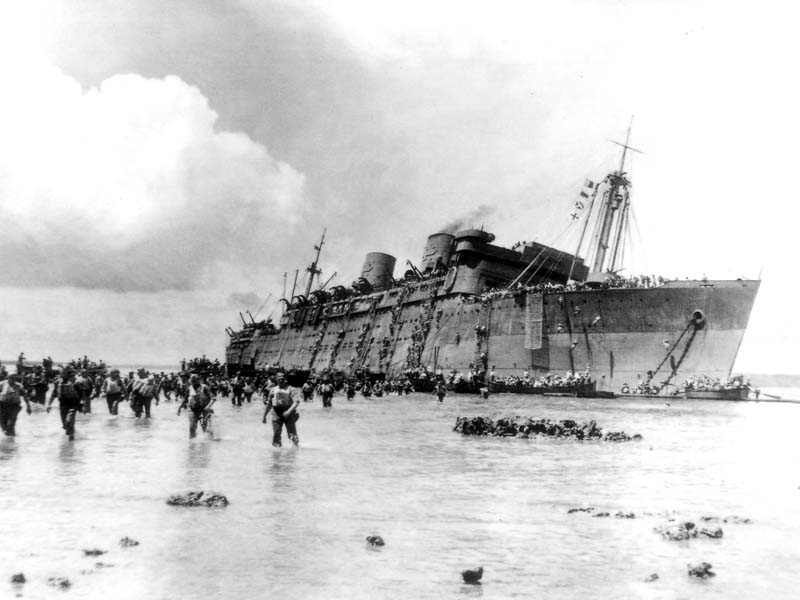
The SS President Coolidge wreck is among the most desirable diving destinations in the world. As an accessible and famous wrecked ship, it offers opportunities for deepwater exploration like no other.
What remains of the SS President Coolidge is off Espiritu Santo, Vanuatu, in the South Pacific. The site is significant due to a combination of historical importance and ease of access. Divers exploring the luxury passenger liner (turned into a troop transport ship during WWII) can get up close and personal with its artifacts and features, provided they have advanced diving skills.
History of the SS President Coolidge
The SS President Coolidge began life as a luxury liner in 1931, built in the hey-day of ocean-going steam ships. The vessel was among the largest ever built in America when finished, offering amenities like gyms, theatres and swimming pools that were sometimes hard to find on land.
Dollar Steamship Lines ran the boat until 1938 before a takeover by American President Lines (hence the name). The ship itself was impressive, holding the record for the fastest Pacific Ocean transit on two separate occasions.
After the Pearl Harbour attack in 1941, the US War Department acquired the USS President Coolidge as a transport vessel. Over the following weeks, crews worked around the clock to remove and sell the civilian fittings and replace the ship with space for 5,000 troops. Engineers also added 3-inch guns to the bows for light arms fire and painted her haze grey to reduce the risk of being spotted by enemy reconnaissance vessels.
The sinking of the SS President Coolidge was tragic. The ship got into trouble when it entered mine-filled waters off Espiritu Santo during the morning of October 26, 1942, close to the end of a 6,800-mile trip from San Francisco. Navy communicators tried to warn the vessel of its impending peril by sending stop signals, telling the captain about the friendly American mines in the area, but two of them detonated under the hull without warning. The ship sank 78m minutes later.
Fortunately, only two of the ship’s 5440 men died. Other men were evacuated on lifeboats (something the ship’s captain had drilled into them during training). More boats from the shore also came to rescue the men while avoiding other mines.
Post-war salvage efforts relating to the SS President Coolidge began during the late 1960s. Divers and engineers removed valuable metals, bunker oil, propellers and other items to return to the mainland. However, on November 18, 1983, the Vanuatuan government made the site of the wreck a protected area and now prohibits salvage of further artifacts.
Today, the wreck remains largely intact. The port side of the ship is 69 feet below the surface, with the stern at around 240 feet down. Most of the hull remains in a single piece, and much of the military gear the vessel was transporting, including Jeeps and trucks, is still visible. Because it has been left untouched for so long, it also now hosts a vibrant marine ecosystem of moray eels, lionfish, and barracuda.
Dive Profile & Conditions
Most divers enter the SS President Coolidge through various portholes and sea doors on the ship’s side. These provide access to the lobby areas and the engine room.
Most days around the wreck have clear visibility (which can change throughout the year). The current is often calm with minimal movement at depth, making for easier diving conditions.
The Advanced Open Water qualification or higher is recommended for diving the SS President Coolidge wreck. The ship is still significantly below the surface, so divers require proper training.
The SS President Coolidge is large, so most divers dive multiple times to explore it fully. Many conduct five or more dives but still don’t have time to explore the vessel fully.
For safety reasons, divers should refine their finning techniques in tight spaces. They should also dive light to reduce the risk of entanglement. Some parts of the ship have sharp edges, so these need to be carefully avoided.
Highlights of the Wreck
The highlights of the wreck include:
-
- “The Lady”
- A bas-relief of an Elizabethan woman riding a horse with a long tail
-
- Artillery
- Various items, including heavy-calibre shells, rifles, and howitzers, used by the 1940s American military
-
- Trucks
- Jeeps, and other vehicles used for transporting supplies
-
- Chandeliers
- Engine room
- A location on the ship approximately 150 feet below the water
Divers venturing this far under will find stunning marine life that’s turned the ship into a home. Common sightings around the SS President Coolidge include lionfish, groupers and soft corals.
Planning Your Dive
The best time to visit the SS President Coolidge wreck is from May to October due to calmer seas. This part of the year has the most visibility, providing longer diving windows and safer conditions.
The closest accommodations to the wreck are on Vanuatu island. Aore Adventures offers lodging for quick access. With us, you can enjoy a private waterfront beach house overlooking the Segond Channel.
You can also book diving with a local dive operator. We are the only operator in Santo with top-quality safety equipment, including automatic external defibrillators, oxygen resuscitation kits, and advanced first aid kits. Hire equipment includes top of the range Oceanic and Hollis regulators and BCDs.
Conservation & Respect
The SS President Coolidge wreck is a site of historical and personal significance for the families who lost their loved ones in the tragic accident. Therefore, it is essential to dive responsibly, preserving the site for future generations.
In general, divers should:
- Avoid touching or disturbing the wreck or any of the marine life attached to it
- Refrain from removing any objects considered a part of the wreck
- Follow approved paths through the water and ship, adhering to guide instructions
- Dive carefully and consider the depth of the ship, using decompression stops along the way
Conclusion
Ultimately, the SS President Coolidge wreck is a must-dive location. It combines history with interesting wildlife and calm seas.
Plan your dive trip with Aore Adventures or contact us for bookings

